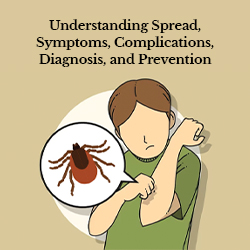
Dr. Sriram Bonu
MBBS, MD,
Consultant Pediatrician
Imagine that it’s the rainy season, and your child wants to go out and play – or that you’ve gone for a family vacation to a hilly or forested area with your child.
Among the many things to be wary of, here’s one you should keep in mind: Scrub Typhus.
Scrub typhus, a bacterial infection originating from Japanese bacteria, poses a significant health risk in various parts of the world, particularly in hilly regions and grassy areas. This illness, often transmitted through the bite of larval mites, ticks, lice, or fleas, presents a myriad of symptoms, complications, and diagnostic challenges. In this comprehensive exploration, we delve into the intricate facets of scrub typhus, shedding light on its spread, symptoms, complications, diagnosis, and preventive measures.
Spread and Transmission
Scrub typhus, caused by Orientia tsutsugamushi, is primarily transmitted through the bite of infected mites, with larvae being the most common vector. These mites, typically measuring between 0.3 to 0.5 mm in length and often reddish in color, inhabit areas abundant in vegetation, such as forests and grasslands, particularly in hilly terrains. Furthermore, scrub typhus can also spread through the bites of ticks, lice, and fleas, making it a potential threat in various environmental settings.
Symptoms
Scrub typhus is often characterized by a sudden onset of symptoms, with affected individuals experiencing:
- High-grade fever, accompanied by shivering
- Severe headache
- Generalized body rashes
- Additionally, patients may suffer from abdominal pain and vomiting, further complicating the clinical presentation
- Myocarditis, an inflammation of the heart muscle, can lead to cardiac dysfunction and potentially fatal outcomes.
- Acute respiratory distress syndrome (ARDS) poses a significant risk, impairing lung function and causing respiratory failure.
- Mental changes, ranging from confusion to delirium, may occur due to the neurotropic effects of the bacteria.
- Internal bleeding and multi-organ failure, including liver and kidney dysfunction, can significantly worsen the prognosis if not promptly addressed.
- Ensure that your child avoids areas with dense vegetation and known mite habitats, such as bushes and grassy areas.
- Limit your child’s outdoor activities, especially during the rainy season when mite activity is heightened.
- Advise your child to Wear long sleeves and pants to protect exposed skin from mite bites.
- Make sure your child applies insect repellents containing DEET or permethrin to deter mites and other vectors.
- Encourage your child to practice good hygiene habits, such as changing clothes and washing hands and feet thoroughly after outdoor activities, particularly for children who are more susceptible to infection.

